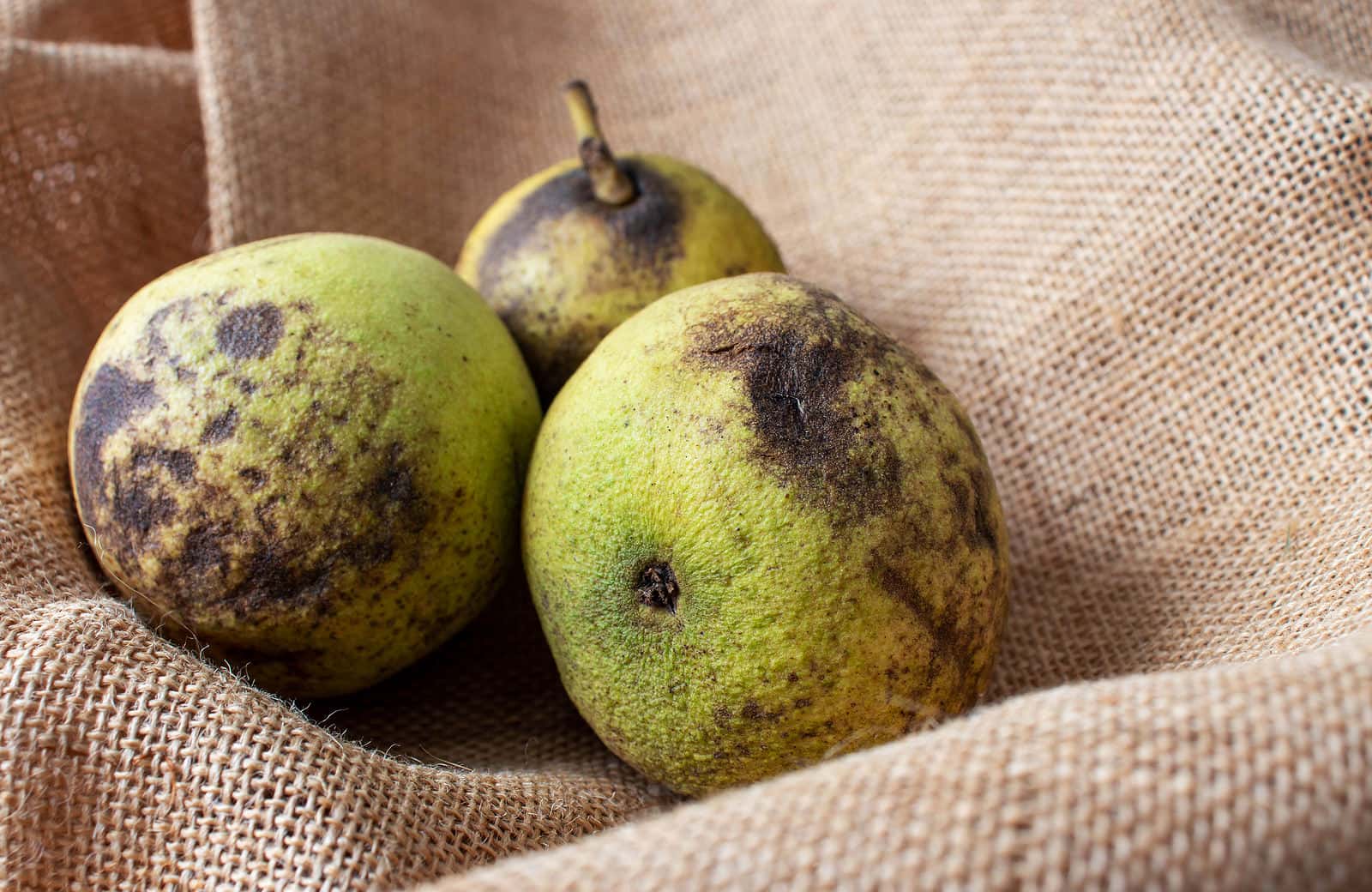
Have you ever seen black walnuts? When they fall off the tree, they are surrounded by large green fruit husks that are very tough. Both those green balls and the leaves have a pungent aroma. Is it worth taking the trouble to get to the nutmeat?
Memories of Black Walnuts:
Q. I grew up in the Missouri Ozarks where wild black walnut trees abounded and I enjoyed them each year in late fall. We had to remove the dried husks (being dry told us they were ready!) and then cracked them with a claw hammer. Cracking them in this manner took special skills, as hitting them too hard would destroy the nut meats inside. We became skilled at carefully opening them just enough to remove perfect walnut halves, a premium treat for snacking and highly coveted by our moms for baking delectable holiday treats, such as Mrs. Johnson’s walnut/date pinwheel cookies.
I now eat about three tablespoons of black walnuts with each bowl of breakfast cereal along with a couple of teaspoons of dried currants, two teaspoons of dried cranberries and maybe a teaspoon of blackstrap molasses. My question is whether there is any difference between the two types of walnuts in terms of their heart benefits. They have very different flavors. I prefer the stronger flavor of the Missouri Ozark nuts myself.
A. We appreciate your reminiscence and wish we had a recipe for Mrs. Johnson’s cookies. Your breakfast cereal adornments sound delicious and very healthful. We have heard previously about using the fruit husk topically to fight ringworm.
Great-Grandma’s Black Walnut Icebox Cookies:
In response to this letter, we received the following reminiscence:
Q. I enjoyed a nostalgic discussion in your column about the health benefits of black walnuts. I too grew up under a black walnut tree; one of my earliest memories is of my great-grandmother (born in 1864) sitting on the cellar stairs busting open black walnuts between a hammer and an old flatiron. That was nearly 85 years ago, as I am now 87.
Here is her recipe for Black Walnut Icebox Cookies, delicious when dunked in coffee: Melt 1 stick (4 oz) butter. Stir in 1 1/2 cups dark brown sugar. When it has cooled a little, stir in 1 egg and 1 tsp vanilla. Add 2 cups flour, 1 tsp baking powder, 1/2 tsp salt, and 1 cup or more chopped black walnuts. Form dough into two rolls, wrap, and refrigerate. Chill until hard. Slice thin and bake on greased cookie sheet 8-10 minutes at 350* until slightly brownish. Dough can be kept in refrigerator for several weeks.
PS. If you don’t happen to have a black walnut tree, the best online source I know of is Hammons, a black walnut cooperative in Missouri.
A. Thank you so much for sharing your great-grandmother’s cookie recipe. It sounds delicious!
We can’t pretend that cookies are health food. By themselves, though, walnuts appear to have anti-inflammatory properties (Oxidative Medicine and Cellular Longevity, April 21, 2021). This appears to have cardiovascular benefits.
Differences Between Walnut Types:
There are some differences between English walnuts (Juglans regia) and black walnuts (Juglans nigra). About ten years ago, Wisconsin scientists found that an ounce of English walnuts maintained the flexibility of blood vessels after a high-fat meal (Journal of Medicinal Food, Sep. 2011). The same amount of black walnuts did not.
However, the phytonutrients in black walnuts may have anticancer activity (Molecules, Oct. 2020). Apparently the phenolic compounds that give them their distinctive flavor are responsible for antioxidant and anti-cancer activity. You can’t get that from just any breakfast!
Citations
- Bošković M et al, "Walnut supplementation restores the SIRT1-FoxO3a-MnSOD/catalase axis in the heart, promotes an anti-inflammatory fatty acid profile in plasma, and lowers blood pressure on fructose-rich diet." Oxidative Medicine and Cellular Longevity, April 21, 2021.
- Fitschen PJ et al, "Cardiovascular effects of consumption of black versus English walnuts." Journal of Medicinal Food, Sep. 2011. DOI: 10.1089/jmf.2010.0169
- Ho K-V et al, "Profiling Anticancer and Antioxidant Activities of Phenolic Compounds Present in Black Walnuts (Juglans nigra) Using a High-Throughput Screening Approach." Molecules, Oct. 2020. doi: 10.3390/molecules25194516

